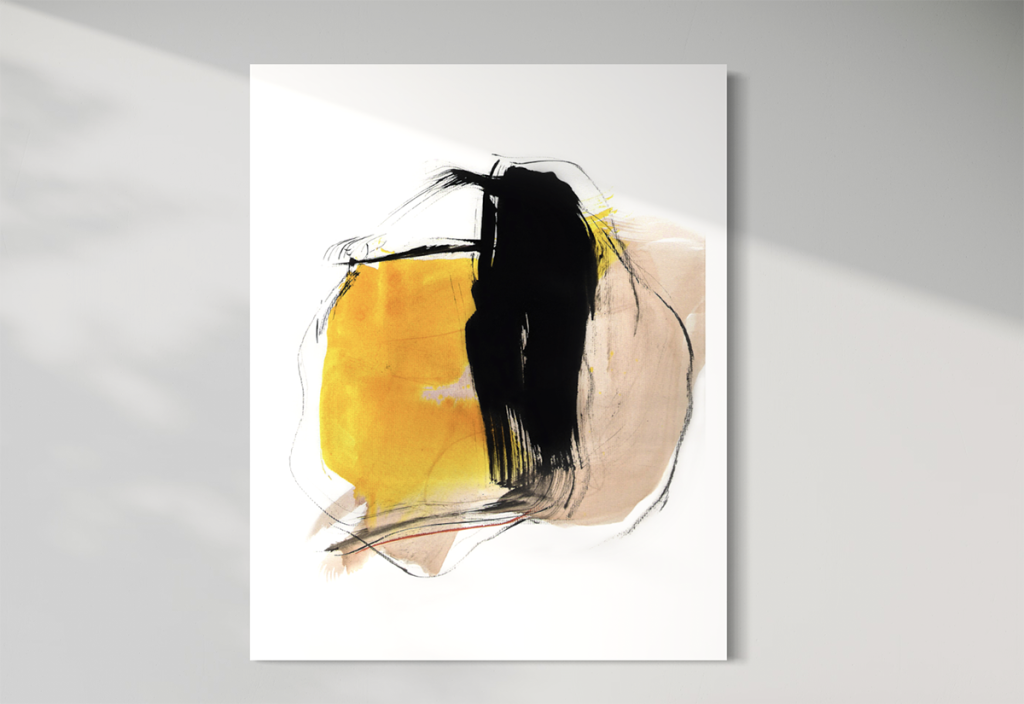Salwa Zeidan’s artistic journey is as expansive as the landscapes she has traversed. Born in Lebanon’s Bekaa Valley, she developed a deep appreciation for cultural intersections and the transformative power of art. Her travels, spanning continents and philosophies, have informed a practice rooted in minimalism, presence, and a search for truth. Now based in Abu Dhabi, she not only creates but also nurtures the region’s art scene through her contemporary gallery, a space that champions both emerging and established artists.
Zeidan’s work, spanning mixed media, sculpture, and conceptual art, carries themes of peace, love, and environmental awareness. She distills complex ideas into their purest form, inviting viewers into moments of quiet contemplation. Through her dedication to simplicity and depth, she continues to challenge the expectations of the art market while remaining true to her philosophy of distillation—removing excess until only the essential remains.

Here is the artist’s interview.
1. What is your creative process like?
My creative process is deeply intuitive and built on a dialogue between materials, space, and form. I begin with a concept or emotion, but I allow the process to guide me rather than forcing an outcome. Working across painting, sculpture, and mixed media, I explore minimalism not just as an aesthetic, but as a way of thinking—distilling an idea to its purest form.
I often start by selecting materials that resonate with the energy of the piece. Whether it’s raw threads, textured surfaces, or sculptural elements, I let the material speak, shaping and reshaping until I find a perfect balance between presence and absence. My approach involves layering, deconstructing, and refining, stripping away anything unnecessary until what remains feels essential. There is a meditative quality to this process—each gesture, each decision is intentional, creating work that is quiet yet powerful.
2. Do any personal experiences shape your work?
Absolutely. My work is deeply personal, reflecting both my internal world and my surroundings. I draw from experiences of transformation, displacement, and the search for stillness in a chaotic world. My artistic journey has been shaped by an ongoing dialogue between presence and emptiness, form and formlessness—concepts that are not only philosophical but also deeply personal.
Growing up in a space of cultural intersections, I have always been drawn to the tension between tradition and modernity, permanence and impermanence. This is why I work with materials that embody both fragility and resilience—threads, raw surfaces, and sculptural elements that feel timeless yet ephemeral. Each piece becomes a reflection of an internal landscape, inviting the viewer to connect with their own emotions and memories.
3. What challenges do you face as an artist?
One of the biggest challenges I face is navigating the balance between artistic integrity and the demands of the art market. Minimalism, by its nature, requires patience and deep engagement, yet today’s fast-paced world often seeks immediate impact and easily digestible narratives. My work asks for quiet contemplation, which can be at odds with a market driven by trends and commercial viability.
Another challenge is the physical aspect of working with materials in new ways. As I experiment with unconventional methods, such as strengthening threads for durability or exploring new sculptural techniques, I face technical obstacles that require constant research and innovation. But these challenges also fuel my creativity, pushing me to find solutions that enhance the conceptual depth of my work.
Beyond the studio, there’s the challenge of visibility—connecting with the right audience, collectors, and institutions that appreciate the subtleties of my art. While much of the art world thrives on personal relationships, I am also exploring ways to expand my reach and introduce my work to new audiences.
4. What do you want people to feel when they see your art?
I want my work to create a space for reflection—a pause in time where viewers can engage with stillness, absence, and the power of simplicity. In a world filled with noise and constant stimulation, I hope my art offers a counterpoint, an invitation to slow down and observe the subtle interplay of form, texture, and negative space.
I aim to evoke a sense of grounding and emotional connection, where each piece serves as a mirror for the viewer’s own thoughts and emotions. Some may see a sense of solitude, others may feel serenity, while some might find tension in the quiet restraint. I embrace this openness—art should not dictate meaning, but rather provide an experience that is deeply personal to each observer.
Salwa Zeidan’s work is an invitation to pause, to reflect, and to find meaning in simplicity. Her exploration of presence and absence, form and formlessness, challenges the viewer to engage beyond the surface. While she navigates the complexities of the art world, she remains committed to her practice, allowing intuition and materiality to guide her. Through her artistic and curatorial efforts, she not only shapes her own creative path but also uplifts others, fostering a deeper appreciation for contemplative art. Whether through a canvas, a sculpture, or an installation, her message remains clear: art is a space for quiet transformation.


